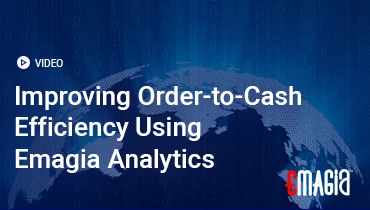Welcome to the definitive guide on the monthly close process. For any business, regardless of its size, a well-executed end of a month closing procedure is more than just a routine task; it’s a critical foundation for sound financial health and strategic decision-making. This comprehensive guide will walk you through every stage, from the preliminary preparations to the final close reporting, helping you to build a robust and efficient process. We’ll explore best practices, common challenges, and the tools that can transform your monthly reporting from a tedious burden into a streamlined, value-added activity.
Understanding the Monthly Closing Process in Accounting
At its core, the monthly closing process in accounting is a series of steps taken by an accounting team to finalize all financial transactions for a given month. It’s an essential procedure that ensures all revenue and expenses are accurately recorded for the period. The outcome is the creation of reliable financial statements that provide a clear snapshot of the company’s performance and position. Think of it as a quality control checkpoint, confirming that all financial data is clean and ready for analysis.
Why is this so important? A timely and accurate monthly close provides management with the data needed to make informed decisions. It allows for the early identification of trends, the evaluation of budgets against actuals, and the assurance that the business is on track to meet its financial goals. Without a solid monthly close, a business is operating in the dark, unable to trust its own numbers.
The Crucial Steps of the Month End Closing Process
The monthly closing is not a single event but a methodical sequence of actions. Each step builds on the last, ensuring that all aspects of the company’s financial activity are considered. Here is a detailed breakdown of the key stages involved in a successful month end closing process.
1. Initial Preparations and Communication for the Monthly Close
The success of the monthly close starts long before the month’s end. This initial phase is all about laying the groundwork and getting the team aligned. A key best practice is to set a clear timeline and communicate deadlines to all departments. This is where you create a month end close checklist and a detailed schedule.
It is also vital to ensure all financial documents from the month are collected and organized. This includes bank statements, vendor invoices, customer payments, and expense reports. Proactive communication with other departments—like sales, marketing, and operations—can prevent delays and missing information down the line. A clear policy on expense report submissions and invoice cut-off dates is a game-changer.
2. Verifying and Posting all Transactions
Before you can begin any reconciliations, you must ensure that all financial transactions for the month are entered into your accounting system. This involves reviewing bank feeds, processing outstanding invoices, and recording all cash receipts and disbursements. The goal here is completeness and accuracy. Any transaction that occurred before the end of the month must be posted.
This is also the stage where you should review your Accounts Payable and Accounts Receivable. Make sure all vendor bills have been recorded and all customer invoices have been sent. The old adage of “close ap first then close other things” holds a lot of truth here, as getting a handle on your liabilities is a great way to start the clean-up process.
3. Month End Journal Entries and Adjustments
This is one of the most technical parts of the process. Month end journal entries are used to record transactions that have occurred but have not yet been posted in the general ledger. Common examples include:
- Accruals: Expenses that have been incurred but not yet paid or invoiced (e.g., salaries or utilities).
- Prepayments: Payments made in advance for goods or services that will be used in future periods (e.g., insurance or rent).
- Depreciation and Amortization: The systematic expensing of fixed assets over their useful life.
These entries are critical for ensuring that the monthly financial statement/report accurately reflects the company’s financial position and performance for the specific period.
4. Month End Account Reconciliation
Reconciliation is a powerful and non-negotiable part of the monthly close. It involves comparing the balances of your company’s accounts in the general ledger to their corresponding external statements. The most common reconciliation is the bank reconciliation, where you match your company’s bank statements to your cash account in the ledger.
Beyond bank accounts, you must also reconcile credit card statements, accounts receivable, accounts payable, and payroll. This step helps identify errors, duplicate entries, or even fraudulent activity. It’s a key procedure for maintaining the integrity of your financial records and is a primary component of a solid month-end close process.
5. The General Ledger Closing Process
Once all transactions have been posted, journal entries made, and accounts reconciled, the general ledger is ready for closing. This involves the formal act of closing out all temporary accounts (revenue, expenses, and dividends/drawings) and transferring their balances to a permanent account, like Retained Earnings.
The closing process accounting ensures that each new month begins with a clean slate for all temporary accounts, allowing for the accurate tracking of financial activity for that period alone. Permanent accounts, such as assets, liabilities, and equity, remain open and carry their balances forward to the next month.
6. Preparing and Analyzing Month End Reports
With the books officially closed, the final and most valuable step is to prepare the monthly financial reports. These reports are the culmination of all the work done throughout the process. The core set of reports includes:
- The Income Statement (or P&L): Summarizes revenues, costs, and expenses over a period of time.
- The Balance Sheet: Provides a snapshot of assets, liabilities, and owner’s equity at a specific point in time.
- The Statement of Cash Flows: Details the cash and cash equivalents entering and leaving the company.
After generating these reports, a critical review should be performed. Compare the results against previous months and against the budget to identify significant variances and understand the story the numbers are telling. This is the essence of monthly reporting and turns raw data into actionable business intelligence.
Best Practices for a More Efficient Month-End Closing Procedure
A slow or error-prone closing process can cripple a business. By adopting certain best practices, companies can significantly reduce the time and effort involved, transforming a painful process into a routine one.
- Automate wherever possible: Use accounting software that can automate repetitive tasks like bank reconciliations, invoice creation, and expense tracking. Automation is the single biggest factor in speeding up the monthly close.
- Use a detailed checklist: A comprehensive accounting monthly close checklist ensures no step is missed and provides a clear roadmap for all team members.
- Communicate and collaborate: The close is a team effort. Ensure open lines of communication between accounting and other departments to avoid last-minute surprises.
- Establish clear cut-off dates: A firm deadline for all financial activity (like expense report submissions) for the end of the month helps prevent delays and messy data.
- Perform mini-closes: Rather than waiting until the month’s end, perform some tasks on a weekly basis, such as reconciling key accounts. This reduces the workload at the end of the month.
How Advanced Technology Transforms the Monthly Close
Technology has revolutionized the way accounting teams handle the monthly closing. The manual, spreadsheet-heavy processes of the past are being replaced by integrated, intelligent platforms that not only speed up the process but also improve accuracy and compliance. These solutions leverage automation and AI to take on the most tedious tasks, allowing finance professionals to focus on analysis and strategy.
By integrating with enterprise resource planning (ERP) systems, these tools can centralize all financial data, providing a single source of truth. They can automate journal entries, match payments to invoices, and even perform complex reconciliations with minimal human intervention. This shift from manual to automated processes is a key driver for businesses looking to gain a competitive edge through faster, more accurate financial insights.
How Emagia Helps Revolutionize Your Accounting Close Process
Emagia provides a powerful suite of AI-driven tools that are purpose-built to streamline and accelerate financial operations, including the crucial accounting close process. By leveraging machine learning and intelligent automation, Emagia helps businesses overcome the common bottlenecks that delay a timely close.
Emagia’s solutions can automate cash application, intelligently matching payments to invoices to ensure that your Accounts Receivable data is always current. It also offers advanced collections management, using predictive analytics to identify at-risk accounts and automate communication, thus improving cash flow. By automating these upstream processes, the data flowing into your general ledger is cleaner and more accurate, which directly leads to a faster and more reliable monthly closing. This shift allows teams to move away from reactive problem-solving and towards proactive financial management, making the month ended a moment of clarity, not chaos.
Frequently Asked Questions about the Monthly Close Process
What is the month end closing process in accounting?
The month end closing process is a set of accounting activities performed at the end of each month to finalize financial records, reconcile accounts, make adjusting journal entries, and prepare the month end reports and financial statements. It ensures that all financial data for the period is accurate and complete.
What does the general ledger closing process involve?
The general ledger closing process involves transferring the balances of all temporary accounts (revenues, expenses, etc.) to a permanent equity account (like Retained Earnings). This is done to reset the temporary accounts to a zero balance at the start of a new accounting period, allowing for accurate tracking of the new month’s activity.
What are the key month end close procedures?
Key procedures include reconciling bank statements and other accounts, reviewing and posting all invoices, recording adjusting journal entries for things like accruals and depreciation, and generating financial statements such as the income statement, balance sheet, and statement of cash flows.
What is a good month end close process flowchart?
A good flowchart visualizes the sequence of tasks, from the initial collection of data to the final reporting. It should outline responsibilities, set clear deadlines, and show the dependencies between tasks, such as closing accounts payable before moving on to other reconciliations.
How can a month end close checklist help?
A month end close checklist is a powerful tool that standardizes the process. It ensures every necessary step is completed in the correct order, helping to avoid errors, improve efficiency, and provide a clear framework for team members, especially during a busy period.
Why is month-end reporting important?
Month-end reporting is critical because it provides timely and accurate financial information to management and stakeholders. The monthly financial report helps in performance analysis, strategic planning, budgeting, and making key operational decisions.
We have explored the intricate details of the accounting month end close procedures. The importance of a well-defined and efficient process cannot be overstated. By focusing on preparation, automation, and clear communication, any business can transform its monthly closing into a powerful tool for financial insight.


